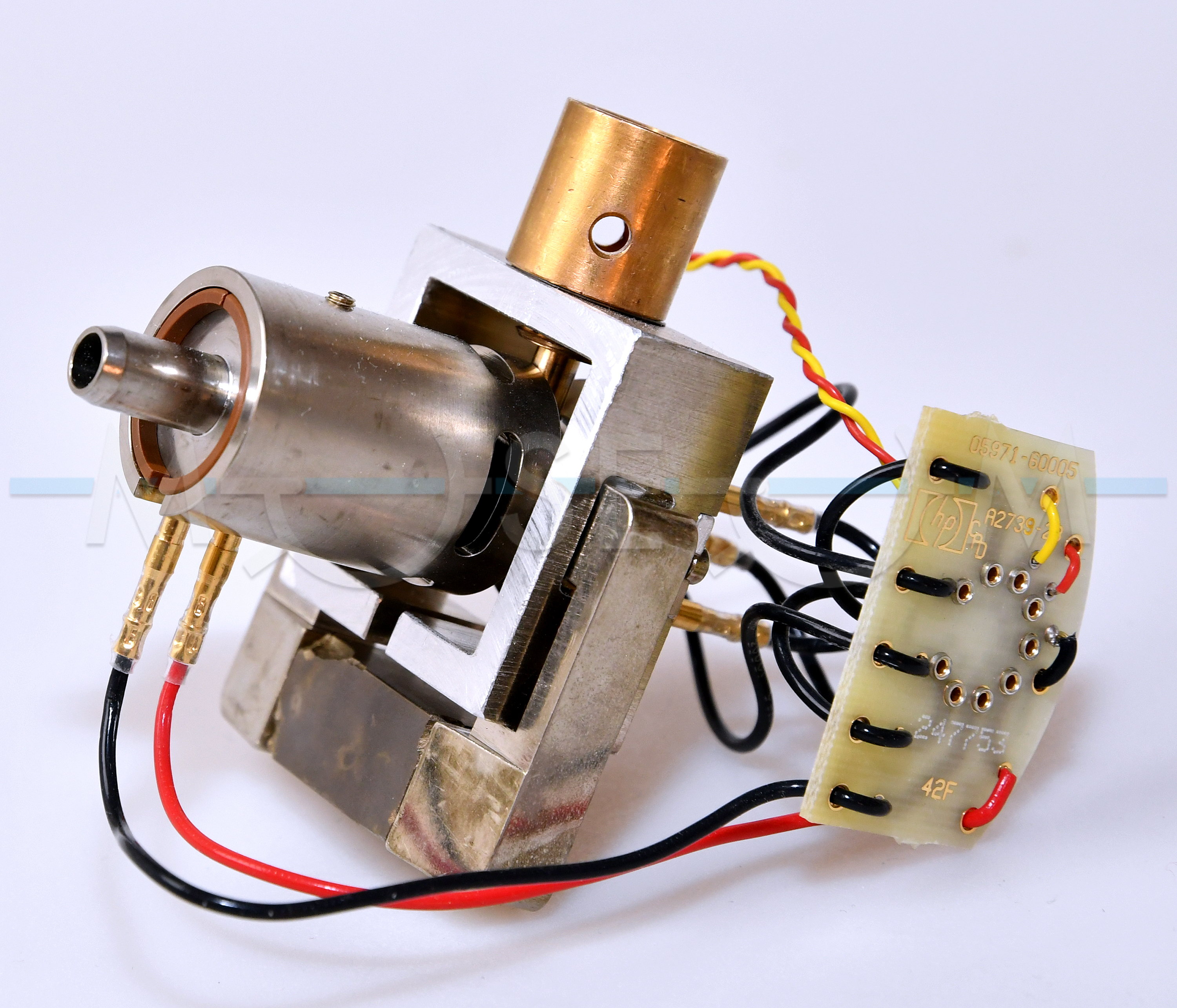Categories of exhibits
Electron ionization source
Exhibit no. 489
The electron ionization (EI), formerly known as electron impact is a widely used ionization technique in organic mass spectrometry. EI source is held at elevated temperature (approximately 200 °C) to maintain the analytes in the gas phase. A heated tungsten or rhenium filament produces a beam of thermionic electrons that traverses the source and interacts with the analytes. Small permanent magnets force the electrons into helical paths thereby increasing the distance that the electrons travel and thus the chance for ionization. The electron energy depends on the potential difference between the filament and a trap electrode on the opposite side of the ion source. If a difference of 70 V is maintained, the electrons have energies of 70 electron volts (eV). A voltage on a repeller plate located opposite the exit leading to the mass analyzer acts to propel the ions out of the ion volume.
The exhibit is an electron ionization source from the 5972 MSD single quadrupole mass detector manufactured by Hewlett-Packard in 1993. The ion source with a cylindrical geometry consisted of the source body, repeller plate, drawout plate, and two electrostatic lenses. Two independent filaments were located on the opposite sides of the outside of the ion source. A small permanent magnet focused the electron beam. The instrument mass range was 1.6 - 700 Da with the scan speed up to 1800 Da/sec and 1 Da resolution.





